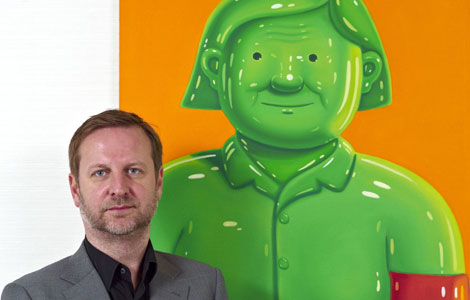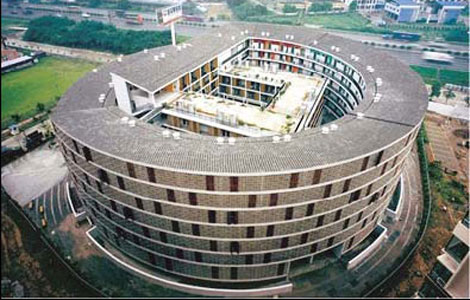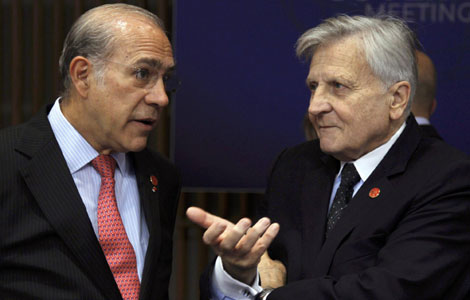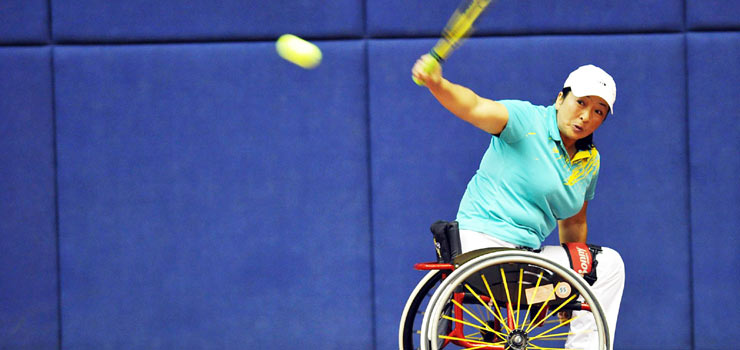The Trouble with Tresses
Updated: 2011-10-16 13:52
(Xinhua)
|
|||||||||||
BEIJING - Yan Xiuzhen has her hair trimmed and her loosened curls strengthened almost every month at a hair salon in Beijing, an action that would've brought her strict punishment during the "cultural revolution" (1966-1976).
"A short haircut with mild waves looks neat and elegant, and I believe it fits my career position well," says the 56-year-old chairwoman of the China Hairdressing and Beauty Association (CHBA).
"Chinese people now enjoy complete freedom in choosing their appearance, but in the past, a hairstyle that was considered improper by ruling authorities could lead to beheading," she says.
Shave or die
A Confucian doctrine prohibited men and women of the Han ethnicity from cutting their hair, according to Zhang Youwang, a senior consultant from the Beijing Hairdressing and Beauty Association.
Ethnic Manchu men, on the other hand, partially shaved their heads, leaving a length of hair in the back that was fashioned into a long braid, also known as a pigtail or queue. When the Manchu-dominated Qing Dynasty (1644-1912) came into power in 1644, the first Manchurian emperor Shunzhi ordered all Han men to shave their heads and adopt the queue hairstyle as a sign of submission.
Historical records show that the Qing government would station barbers and executioners along the sides of city streets. Those who refused to shave their heads were beheaded on the spot, according to Zhang.
The strict head-shaving policy sparked widespread resistance from the Han, with fierce clashes breaking out in many areas of China at the time. Sporadic anti-Qing campaigns encouraged Han Chinese to grow out their hair in defiance of the government.
However, the queue hairstyle did not start to disappear until the late 19th century, when it became associated with the failures of the Qing government. Long plaits were considered to be a sign of corruption and a symbol of a government that found itself behind the times, according to Zhang.
It was not until the Revolution of 1911 that the Chinese people were allowed to completely abandon the braids and adopt shorter hairstyles. The uprising, led by democratic revolution forerunner Dr Sun Yat-sen, overthrew the Qing Dynasty in 1912. The queue hairstyle became a thing of the past.
To curl or not to curl
Another milestone in the history of Chinese hairstyles came during the disastrous 10-year "cultural revolution". During the revolution, perms, high heels, cosmetics and jewelry, or anything that would make people look prettier, were banned as they were regarded as symbols of bourgeois life style.
"Many women who were reluctant to cut their curly hair often sought shelter in my small barbershop till late in the evening, because they were afraid of being caught in the street with curly hair," Zhang recalls.
"All of the tools and equipment that we used to give women perms were confiscated or destroyed. The entire hairdressing industry stagnated for a decade."
Yan Xiuzhen remembers she witnessed men and women wearing stylish hairdos were treated wildly by the Red Guards, who had their hair cut in an very ugly way.
Around 1978, the year that China began its policies of reforming and opening-up, Beijing's most popular hair salon, Silian, began offering perms again with the approval of the central government. However, customers still had to obtain documents from their work units to permit them to get perms, according to Wu Xiumin, general manager of Silian.
The shop's brand-new, cutting-edge perm machines attracted crowds of clients, as well as numerous foreign reporters. The news that China had started to allow its citizens to curl their hair quickly spread throughout the world, Wu says.
However, it was not until 1980 that the country's barbershops and salons were allowed to completely restore their services, finally giving the Chinese people complete freedom in their choice of hairstyle, Wu says.
"Hairstyles, a simple matter of personal choice, have been interwoven with political campaigns and social changes throughout Chinese history," Yan Xiuzhen says.
China's hairdressing industry has witnessed rapid growth over the last three decades, offering a variety of services and trendy styles to their customers, according to Yan.
China registered more than 1.2 million hair and beauty salons as of the end of 2010; these salons employed approximately 7 million people and generated 380 billion yuan (nearly $60 billion) in turnover last year, Yan says, citing a survey jointly conducted by the Ministry of Commerce and the CHBA.
Chinese hairdressers in recent times have studied the styles and techniques used by hairdressers from other countries, particularly Japan and Britain, in order to provide their customers with an abundance of choices, according to Yan.
Silian now has about 160 hairdressers, who are capable of making dozens of haircuts.
Wu says, "the salon receives over 1,000 customers everyday and the volume of business can reach more than 27 million yuan a year."
"In a fully open society, people should understand the essence of beauty and select a hairstyle that is appropriate for their life and work environment," Yan says.
Song Chao, a 24-year-old automobile salesman in Beijing, recently paid 120 yuan to have his short hair dyed light brown at a well-equipped beauty salon.
"I don't want my haircut to be too trendy, but adding some color to it is fine. Hairstyles represent one's personal taste, and a proper choice can create a good impression for the people around me," he says.
An 83-year-old woman, who only identifies herself as Li, says she pays about 200 yuan every three months to curl her thinning gray hair in Silian, a habit of nearly 30 years. As a retired teacher, Li's pension is about 3,000 yuan.
"The professional service here makes me feel comfortable and happy. I never go to substandard salons," says Li.
There are a growing number of people who complained about the frustrating service and overcharging problems in recent years, and the administrative authorities are working on stricter service criteria and administrative rules, says Yan.
Hot Topics
Libya conflict, Gaddafi, Oil spill, Palace Museum scandal, Inflation, Japan's new PM, Trapped miners, Mooncake tax, Weekly photos, Hurricane Irene
Editor's Picks

|

|

|

|

|

|







